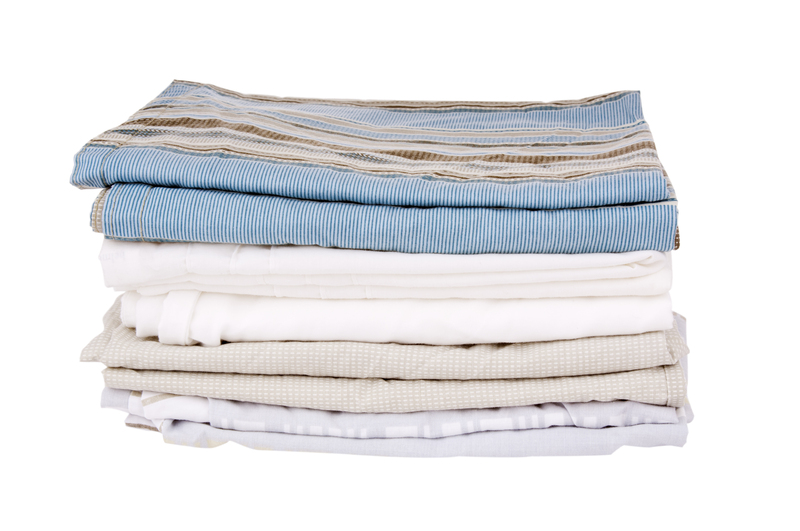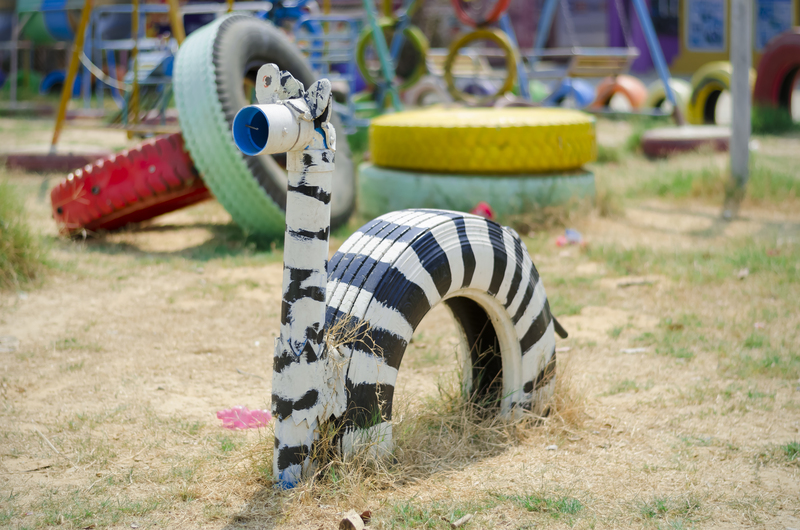Cut Costs When Getting Rid of Bulky Waste Items
Getting rid of large, unwanted items like furniture, appliances, mattresses, and old electronics can be a real challenge--especially if you're on a budget. Bulky waste items take up space, are difficult to move, and often come with expensive disposal costs. Fortunately, there are smart strategies to get rid of bulky waste for less, or even for free. In this comprehensive guide, you'll discover top tips to save money on bulky item disposal, eco-friendly options, and insider advice to make the process easier and more affordable.

What Is Bulky Waste? Understanding the Basics
Bulky waste, also known as bulky items or large waste, refers to objects that are too big or heavy to be collected by regular municipal garbage services. Common examples include:
- Old sofas and couches
- Mattresses and bed frames
- Large appliances like refrigerators, stoves, and washing machines
- Broken furniture (tables, cabinets, wardrobes, etc.)
- Carpets and rugs
- Yard debris (branches, tree trunks, etc.)
- Exercise equipment and bicycles
Because of their size and weight, these items often require special handling. Municipalities may limit the number of bulky items collected per household, or charge extra fees. That's why it's important to explore alternative bulky waste disposal solutions that are both cost-effective and environmentally responsible.
Why Bulky Item Disposal Can Get Expensive
Before diving into cost-saving tips for bulky waste removal, it helps to understand why costs can pile up. Here are some of the main reasons:
- Special Equipment: Large items may require trucks with lifting equipment, increasing collection costs.
- Manual Labor: Bulky items often need heavy lifting and extra personnel for safe handling.
- Landfill Fees: Disposing of big, heavy items at landfills is usually priced by weight and volume.
- Hazardous Materials: Items like refrigerators may contain hazardous materials (like Freon) requiring special disposal procedures.
- Limited Space: Landfill space is expensive, and many municipalities charge extra for large objects.
However, with some planning and creativity, you can significantly reduce bulky disposal expenses. Read on to find out how!
Top Strategies to Save on Bulky Waste Disposal
1. Tap Into Municipal Bulk Collection Events
Many cities and towns organize annual or seasonal bulky waste pick-up events. During these periods, residents can place large items at the curb for free or low-cost removal.
- Check Local Schedules: Visit your city or town website, or call the public works department for bulk waste collection dates.
- Know the Rules: Limits may apply to types and quantities of items accepted, so always review the guidelines before placing items out.
- Book Early: If the municipality requires scheduling, reserve your collection slot in advance to avoid waiting lists.
Pro tip: Bundle your bulky item removal with neighbors to reach the per-household limit and split extra costs!
2. Use Donation Services and Charities
Donating bulky items is a win-win: it helps those in need and saves you disposal fees. Many charities will pick up furniture, appliances, and other large items for free, provided they're in usable condition.
- Contact Habitat for Humanity ReStores, Goodwill, or The Salvation Army for furniture and appliance pickup.
- Schedule a free pick-up through online platforms like Pickup Please or local church groups.
- If your item is too worn for charity resale, some organizations still accept it for recycling parts and materials.
Always check the donation guidelines. Some items (like mattresses or broken appliances) may not be accepted.
3. List Items for Free or Sale Online
Someone else's trash could be another's treasure! Online classifieds and community marketplaces are excellent for getting rid of bulky waste without paying removal fees.
- Use sites and apps like Facebook Marketplace, Craigslist, Freecycle, and OfferUp.
- Give items away for free ("curb alerts" work wonders), or sell them for a modest price to encourage quick pickup.
- Clearly note your item's condition and request that buyers handle all lifting and transport.
Listing items "free for pickup" is often the fastest way to clear out clutter and avoid hauling costs.
4. Take Advantage of Appliance/ Mattress Recycling Programs
Major retailers and utility companies often offer free or discounted appliance recycling and bulky item pickup if you're making a new purchase.
- Buy a new mattress? Many retailers will remove your old one for free during delivery.
- Replacing a fridge or washer? Look for appliance take-back programs or state energy rebates.
- Check if manufacturers have a product stewardship program for large appliances or electronics.
Pro tip: Call before you buy to confirm the collection policy--some removal services are only offered at the time of delivery.
5. Rent a Dumpster--But Share the Cost!
If you have multiple bulky items (or lots of debris), renting a dumpster can be cost-effective. For even bigger savings:
- Split the cost with neighbors or friends who also have bulky waste to dispose of!
- Choose the smallest dumpster size that fits your needs; larger dumpsters cost more by volume.
- Compare rates among local waste haulers. Ask about disposal fees, time limits, and restrictions on types of waste accepted.
Tip: Sort your items for recycling first--metal and electronics may not count toward landfill limits and can sometimes be disposed of for free!
6. DIY Bulk Waste Drop-Off
If you're able to transport them, bringing your bulky items directly to a local landfill, transfer station, or recycling center can be less expensive than scheduling a pickup.
- Check opening hours and accepted items at your nearest facility.
- Some facilities offer free disposal for certain item types or residents on designated days.
- Bring a friend to help with heavy lifting!
*Don't forget to secure your load to avoid fines on the way to the dump!*
7. Repurpose, Upcycle, or Salvage Materials
Before sending items to landfill, consider whether they can be transformed or broken down for parts, materials, or creative reuse.
- Turn old wood furniture into shelves or garden planters.
- Use mattress springs for garden trellises or crafts.
- Salvage metal from appliances and sell to scrap yards.
- Use sections of carpet for garage or workshop mats.
Creative re-use not only avoids landfill costs, but sometimes even makes you money!
Eco-Friendly and Responsible Options for Large Waste Disposal
Saving costs is important, but so is protecting the environment. Here's how to handle your large waste items responsibly:
- Recycle Whenever Possible: Appliances, electronics, and metal items often contain valuable materials and should never end up in a landfill.
- Avoid Illegal Dumping: Never abandon items on sidewalks, green spaces, or vacant lots. Fines for illegal dumping can be far more expensive than proper disposal!
- Check for Local Waste Bans: Many cities have landfill bans on certain bulky items, such as mattresses, tires, or e-waste, due to environmental regulations.
- Use Licensed Haulers Only: If you hire a removal service, always check they are licensed, insured, and will dispose of items properly.
How to Find the Cheapest Bulky Waste Collection Services
Sometimes, hiring a professional is the best (or only) way to handle old furniture, appliances, or other oversized junk. Here's how to cut costs on hiring bulky waste disposal companies:
- Get Multiple Quotes: Compare at least three companies for prices and services offered. Rates can vary widely.
- Avoid Full-Service Markups: If you're able to move items to the curb yourself, ask for a "curbside pickup" discount.
- Book Off-Peak: Prices may be lower for mid-week or off-season appointments.
- Ask About Specials: Some haulers offer discounts for seniors, veterans, or first-time customers.
- Bundle Multiple Items: Most services charge by volume--the more you clear at once, the lower the cost per item.
Remember: Always ask what happens to your items--ethical haulers will recycle or donate whenever possible.
Frequently Asked Questions on Bulky Waste Removal
Can I leave bulky items at the curb for regular trash collection?
Usually, no. Most curbside waste services don't pick up large items without a special arrangement, and leaving items out could result in fines or refusal. Always check with your municipality first.
Are there free bulky item disposal options?
Yes! Many cities offer annual free bulky waste days or accept certain items for free at recycling events. Donation, online giveaways, and manufacturer recycling programs can also save money.
How can I dispose of bulky electronics and appliances safely?
Many electronics stores, manufacturers, and local recycling centers accept TVs, computers, fridges, and other appliances--often at low or no cost. Never put these items in the trash!
Will my local dump take any large items?
Policies vary. Most dumps and transfer stations accept furniture, mattresses, and non-hazardous appliances, but restrictions apply to tires, electronics, and hazardous materials. Always call ahead to check requirements and fees.
How much does professional bulky item removal cost?
Prices depend on item size, number, and location, but expect rates from $75 - $200 for a few pieces of furniture, and more for major cleanouts. Always compare options to get the best deal.

Conclusion: Save Money, Save Space, and Help the Planet!
Getting rid of bulky waste items doesn't have to break the bank--or harm the environment. By using a mix of city services, donations, online marketplaces, recycling programs, and smart DIY techniques, you can cut costs when disposing of large items and keep your home clutter-free.
Remember: Always plan ahead, seek out free or low-cost options first, and make responsible choices to minimize waste. Your wallet and the planet will thank you!
If you're ready to cut costs when getting rid of large waste items and enjoy a cleaner, more organized home, use these tips for smart, affordable, and eco-friendly results.